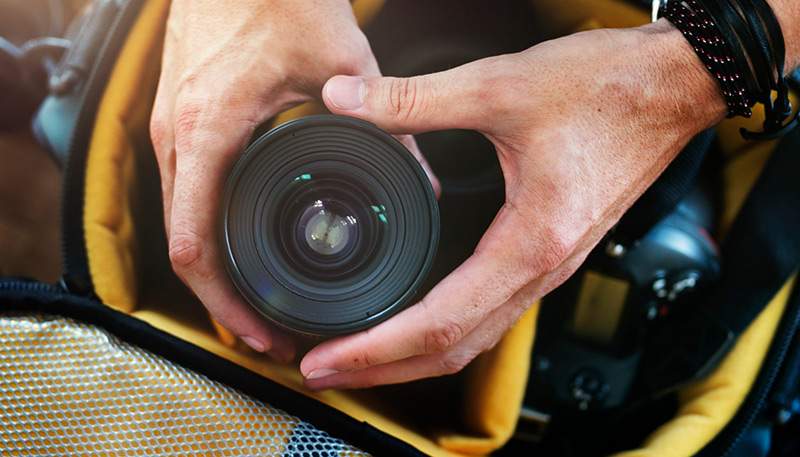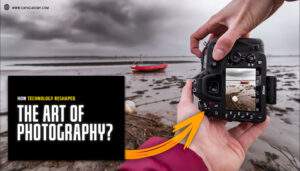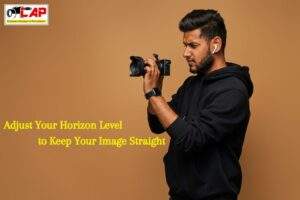You have your first camera, either as a result of enrolling in a photography institute or just out of interest to explore your artistic side. But now for the crucial query that all novice photographers must answer:
Should I buy a prime lens or a zoom lens first?
Each lens has advantages and functions. Your shooting preferences, objectives, and preferred style of photography will all influence your decision. We’ll cover all you need to know about prime vs. zoom lenses in this easy-to-follow tutorial so you can make an informed decision and begin taking meaningful pictures.
Understanding the Basics: What Are Prime and Zoom Lenses?
Before we compare them, let’s quickly understand what each type of lens does.
Prime Lens
A prime lens doesn’t zoom in or out because its focal length is fixed. You must physically move closer or farther away from your subject in order to alter the framing; you cannot do this by twisting the lens.
A 50mm prime lens, for instance, always remains at 50mm.
Common prime lens focal lengths:
- 35mm – Great for street and travel photography
- 50mm – Popular “nifty fifty,” perfect for portraits and all-around use
- 85mm – Excellent for portraits with creamy backgrounds
Zoom Lens
In contrast, the focal length of a zoom lens can be changed. Zooming in and out is possible without shifting positions.
An 18–55mm lens, for example, allows you to zoom in for portraits at 55mm and take expansive landscapes at 18mm.
Common zoom lens focal lengths:
- 18–55mm – Standard kit lens for beginners
- 70–200mm – Great for wildlife and sports
- 24–70mm – A professional favorite for versatility
Prime vs. Zoom Lenses: The Core Differences
After learning about the functions of each lens, let’s examine how they vary in terms of usability and performance.
| Feature | Prime Lens | Zoom Lens |
| Focal Length | Fixed | Variable |
| Image Quality | Sharper, better optics | Slightly less sharp at extremes |
| Aperture | Usually wider (f/1.4, f/1.8) | Narrower (f/3.5–5.6 in budget models) |
| Weight & Size | Compact and lightweight | Larger and heavier |
| Versatility | Limited to one perspective | Covers multiple focal ranges |
| Ideal For | Portraits, low-light, creative shots | Travel, events, general use |
Each has its pros and cons — so let’s explore which might be best for you as a beginner.
Why Beginners Often Start with a Zoom Lens
For good reason, the majority of entry-level DSLR and mirrorless cameras have an 18–55mm kit zoom lens. Zoom lenses are flexible, forgiving, and easy for beginners to use.
1. Convenience and Flexibility
You might not be aware of your favorite genre while you’re first learning to take pictures, such as street, portrait, or landscape photography. With a zoom lens, you can quickly experiment without changing lenses because it captures multiple viewpoints in one lens.
In a matter of seconds, you can zoom in on a friend’s face at 55mm and photograph a mountain range at 18mm.
2. Great for Learning Composition
You can better grasp how focal length impacts perspective and framing by using zoom lenses. You’ll rapidly discover the differences between telephoto and wide-angle photography as well as how distance affects your narrative.
3. Budget-Friendly
You don’t need to make an immediate further investment because the majority of entry-level cameras come with a kit zoom lens. Before upgrading, it’s a terrific method to master the fundamentals.
4. Perfect for Everyday Use
Zoom lenses are excellent all-arounders since they can be used to capture a wide range of subjects, including street scenes, family get-togethers, and travel.
In short: If convenience and flexibility are your priorities, a zoom lens is the perfect starting point.
Why Prime Lenses Are a Game-Changer for Learning Photography
After mastering the basics, a prime lens can let you become even more creative.
1. Sharper Image Quality
Prime lenses provide very sharp and high-quality images because they have fewer moving parts and simpler optics. In terms of clarity and sharpness, even inexpensive 50mm primes frequently perform better than pricey zoom lenses.
2. Better Low-Light Performance
More light can reach the camera thanks to the larger apertures of most prime lenses (such as f/1.8 or f/1.4). This implies that you don’t need to use a lot of flash or high ISO settings when shooting in poorly light areas, cafes, or at dusk.
The dreamy bokeh effect, in which your subject is crisp and the backdrop is exquisitely softened, may also be achieved with wider apertures.
3. Teaches You to Move and Think Creatively
You must move around your subject to compose your photographs because prime lenses are unable to zoom. Beginners gain a better understanding of perspective and composition as a result.
You’ll begin to think more about storytelling, distance, and framing—all important techniques that every great photographer learns early on.
4. Lightweight and Affordable
Prime lenses, such as the 50mm f/1.8, are surprisingly inexpensive, lightweight, and compact. Many experts believe that any beginner’s kit must have this “nifty fifty” lens.
In short: If you want sharper photos, learn creative composition, and explore artistic depth of field — start experimenting with a prime lens early.
Which Should You Buy First — Prime or Zoom?
The answer is contingent upon your learning stage, finances, and aspirations. Let’s take a straightforward approach:
Go for a Zoom Lens if:
- You continue to experiment with many photographic genres.
- One lens that can handle a variety of tasks is what you desire.
- When you travel, you like ease and flexibility.
- You primarily use your camera for recreational or informal photography.
Recommended Zooms:
- 18–55mm (kit lens) – Great for all beginners
- 18–135mm – Wider zoom range for travel
- 24–70mm – For those ready to upgrade
Go for a Prime Lens if:
- You take learning creative photography seriously.
- You want photos that are crisper and look more professional.
- You photograph food, portraits, or scenery in low light.
- You want to know how perspective and distance impact narrative.
Recommended Primes:
- 50mm f/1.8 – Best all-round starter prime
- 35mm f/1.8 – Great for travel and street photography
- 85mm f/1.8 – Ideal for portraits
Many photographers start with a zoom and then switch to a prime lens later; it’s the ideal balance of adaptability and originality.
How a Photography Institute Helps You Choose the Right Gear
When you really know what each lens accomplishes, it’s easy to choose the perfect one. In addition to teaching you how to use your camera, a professional photography institute also explains how to choose the right equipment for your needs.
At a good institute, you’ll learn:
- The technical difference between lenses and focal lengths.
- How to shoot effectively with both prime and zoom lenses.
- How aperture, shutter speed, and ISO interact to create perfect exposure.
- Creative exercises to improve composition and lighting skills.
Beginners go from speculating to confidently understanding their tools with the support of mentorship and practical training.
Conclusion
There is no “right” answer when it comes to prime vs. zoom lenses—just the one that works best for you.
- If you want versatility and a simple introduction to various shooting techniques, start with a zoom lens.
- When you’re prepared to delve further into artistic photography and image quality, add a prime lens.
The best photographers frequently employ both, alternating between them according on the narrative they wish to convey. Choose one, start shooting, and learn as you go instead of overanalyzing.
Enroll at a reputable photography institute in Kolkata where professionals can mentor you through practical experience, equipment comprehension, and innovative techniques if you’re serious about honing your craft.











